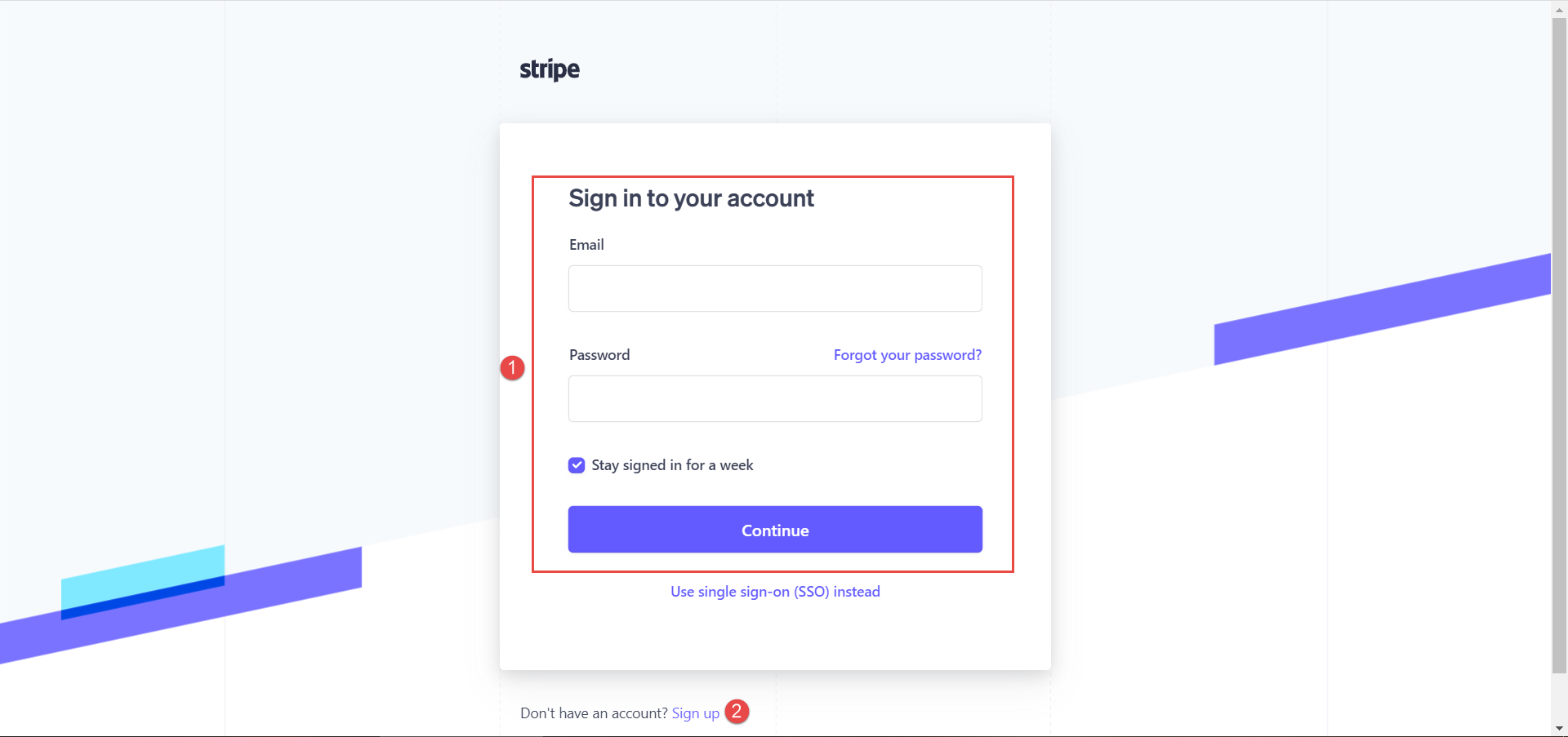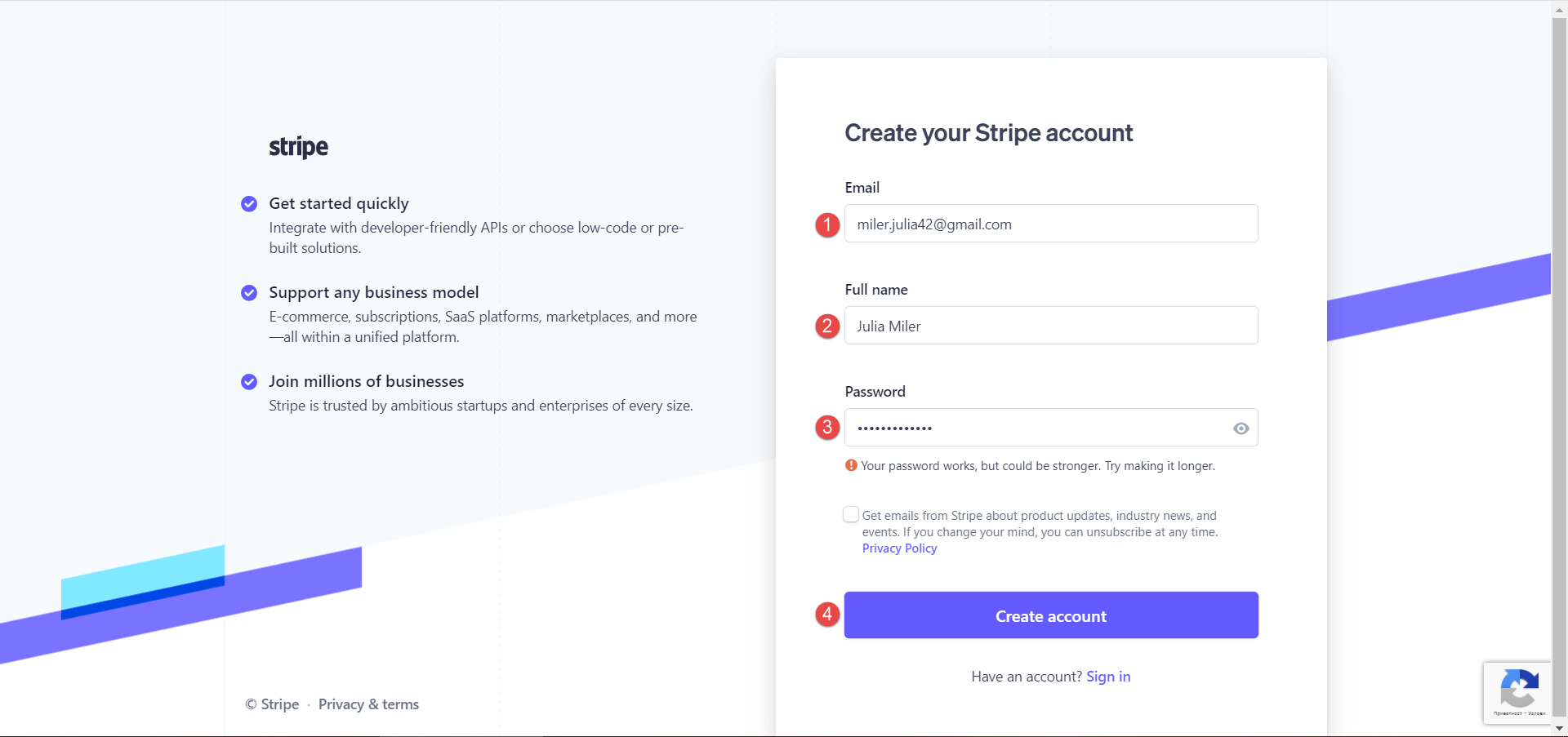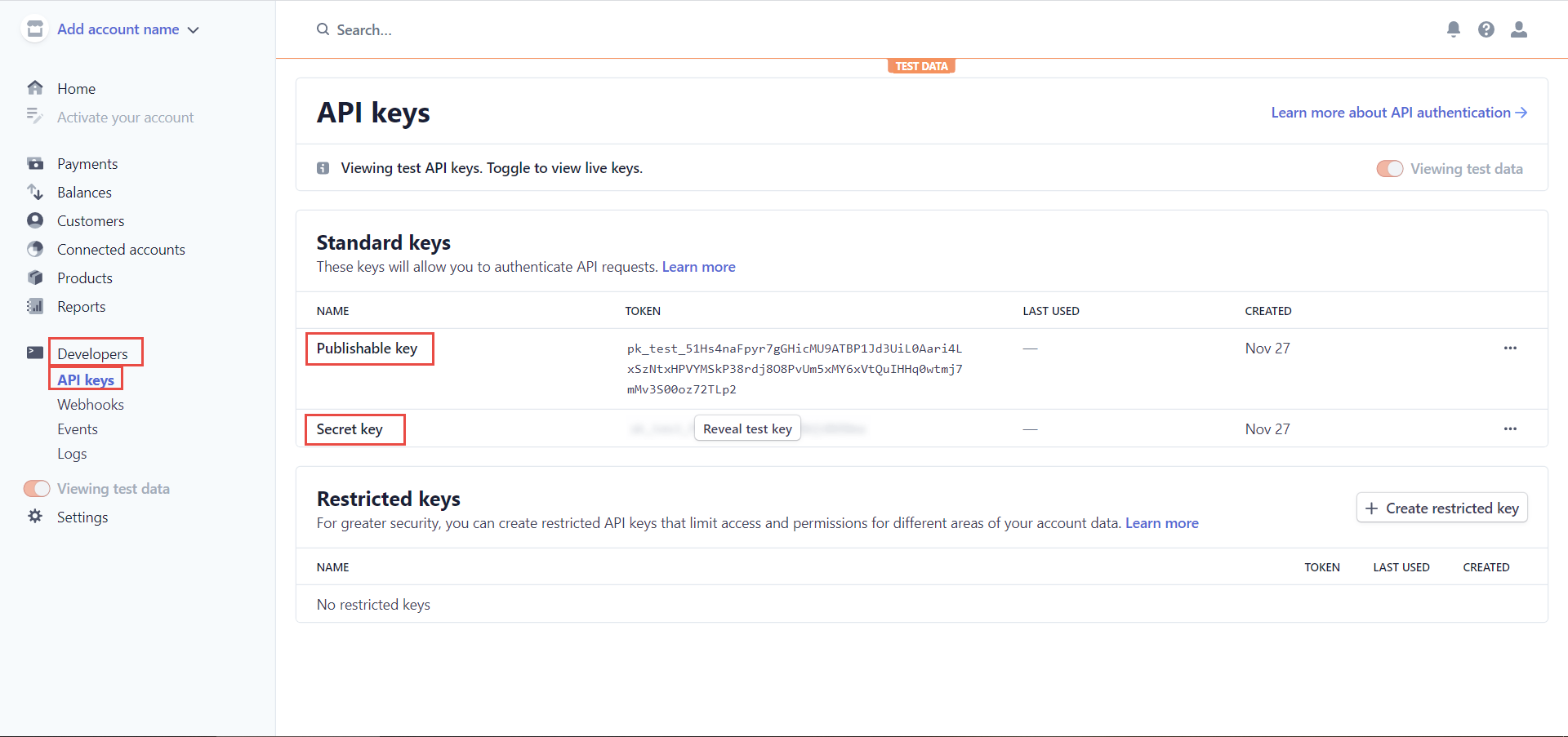This article will explain how to create a Stripe account, set prices, and check payment reports.
Creating a Stripe account #
To create a Stripe account, visit www.stripe.com, then click the Sign in button in the top right corner.
Then, you can:
1. Log in to the existing Stripe account or
2. Create a new account by clicking the Sign up option.
To create a new Stripe account:
- Enter the email address.
- Enter the full name.
- Enter the password for the Stripe account.
- Click the Create account button.
Once you create the account, click the Developers tab and choose API keys. On that tab, you will see Publishable and Secret keys. Click the Reveal test key button to display the secret key. Those keys will be used to connect your Stripe account with the GetCertified application.
Setting up E-commerce Integration #
To navigate to the System/Integrations/E-Commerce tab.
To set up e-commerce, you must have a Stripe account. To connect the GetCertified with your Stripe account:
- Enter the stripe account ID.
- Enter the secret key you got when creating the Stripe account.
- Enter the publishable key you got when creating the Stripe account.
To set up sessions and training course enrollment and prices, follow the next steps:
- Session enrollment
- Enable setting the custom price of testing session enrollment – indicates if test managers can specify a custom price for session enrollment.
- Select the Add price option (enter the price and select the price currency).
- Remove the price by clicking on the Remove option.
- Training course enrollment
- Select the Add price option (enter the price and select the price currency).
- Remove the price by clicking on the Remove option.
How to Identify All Candidates Who Purchased a Testing Session #
For more information, check this article.
Dummy credit card number for testing purposes #
Note: For testing purposes, use a dummy credit card number – 4242 4242 4242; enter a random future date in the MM/YY field and any four numbers in the CVC field.
Example:














